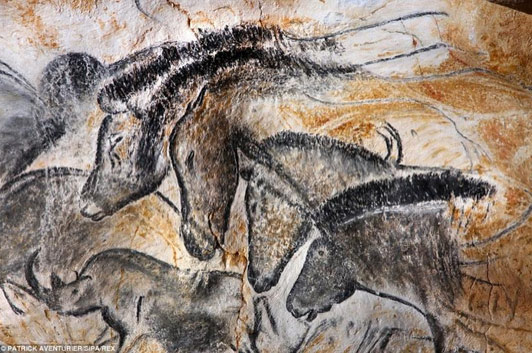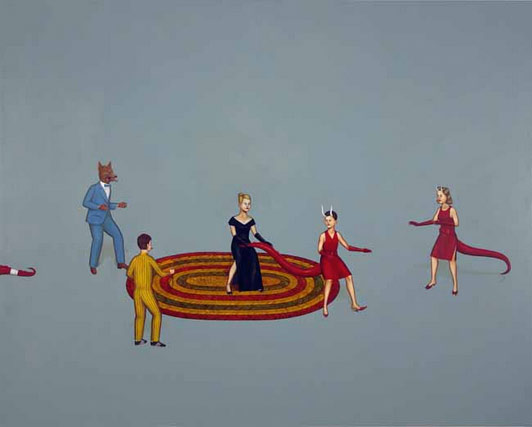
The Point of No Return
After listening to a radio piece about the discovery of France’s newest, oldest cave full of prehistoric drawings, the title of this entry was going to be, “The Ephemeral Drawing.”
The site is called Cave Chauvet-Pont-d’Arc and into eons of pure, protective darkness, the cave’s discoverers introduced a new alchemy of light, and carbon dioxide.
These simple elements of sun and breath now threaten to dissolve the 39,000- year-old fresh-as-made images at such an insulting speed France has had to close the cave to most visitors and erect an exact replica, paintings and all, for the public.
There was a second reason to title this entry “The Ephemeral Drawing.”
The unstable attitude our modern culture has taken toward drawing over time has made the value of the technique difficult to pin down.
There is a long-standing inclination in our hierarchical- obsessed art world to see drawing as a means to an end. Even exquisite ones, the stuff of museum shows, were put in the category of “studies.”
Drawings were a planning device used to map out the preliminaries of a future, more realized formal painting or a sculpture. Drawings were made with unstable materials, the stuff of travel sketchbooks and children’s play. They were casual, unfinished, monochrome, fragile. They were informal, less market-worthy. Ephemeral.
As an artist at the Rice Polak Gallery whose medium is the drawn line, one of the things I most respect about Marla Rice is her ongoing recognition of drawing as a formal medium.

She knows that contemporary artists have expanded the meaning and properties of drawing, applying its responsiveness and immediacy to refine, define, or explode an image.
The collective mind of modern artists use, and should use, all of the materials of our collective culture. Video, animation, computer generated images and sound, installations and light shows have opened our consciousness to new ways of perception.
But these will never preclude the origins of art and its legitimate technology.
This took me down the road to the second possible title: “Why Why Why?”
As in, “Why draw?”
Although variations on this question are what tormented artists pay therapists to help answer, what I meant was, why did it start at all? What shift compelled the human mind’s desire to control a drawn line? What caused that point of no return tens of thousands of years ago?
At Chauvet-Pont-d’Arc, like crystals hidden within a geode, the drawings reveal their shocking beauty.
Mammoth in size, they flicker over each other, arcing across ceilings and emerging from folds in the stone with no sense of ground or sky.
Like us, apes laugh, get sad or silly, fashion tools, go to war, commit murders. But these soaring drawings, elegant and spare, intelligently observed and life-infused, are what mark the true rift between animal and human.
Some anthropologists hypothesize that the brains of the artists of the caves began evolving toward action when populations grew enough to grow close together.
At that point the mind’s need for symbols to connect shared experience may have been born, and as James Joyce said, “The thing that you need is often nearby.”
Here was charcoal, here yellow ochre. Here a wall.

Surely before abstracted imagery it was rhythm that first awoke the aesthetic human mind. Surely before drawing there was sound into song, stride into dance and banging into drumbeat. Even the first line-makers began with rhythmic patterns etched into stone and bone.
But at the moment a crack in a cave wall resembled the flank of a lion enough to make someone draw in the whole leg, the moment someone took an elk head and attached it to the drawn body of a man, everything changed. The imagined became real, the real could morph into line, and both took on the eternal power of share-able symbols.
To one whose modus operandi is drawing this moment is paramount. It’s the answer to my “Why?”
On viewing the pre-ancient drawings for the first time the author of an article in National Geographic about the Chauvet-Pont-d’Arc caves wrote, “Their beauty whipsaws your sense of time… One moment you’re anchored in the present, observing…the next you are seeing the drawings as if all other art – all civilization — has yet to exist.”
Art will unfold into the future in yet to be imagined ways but for me the lines on the cave walls are the bones of my ancestors, the creation story out of which all else tumbles.
If you’d like to add your thoughts to this conversation, please email us.



